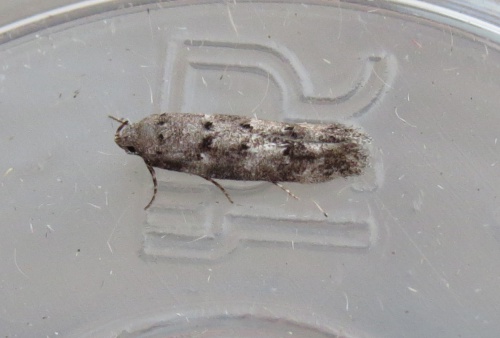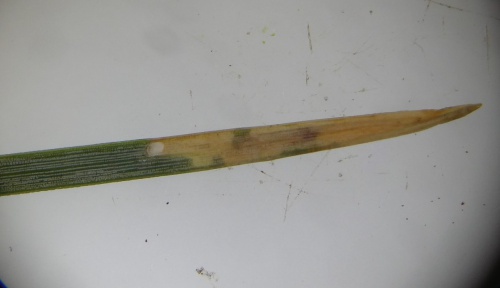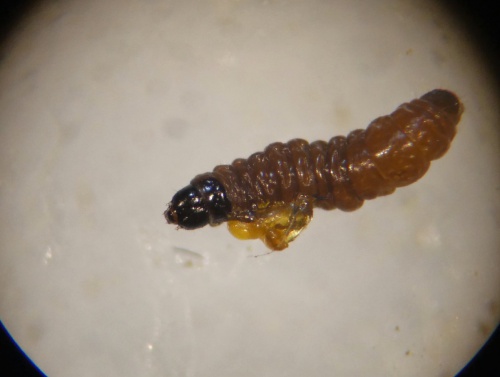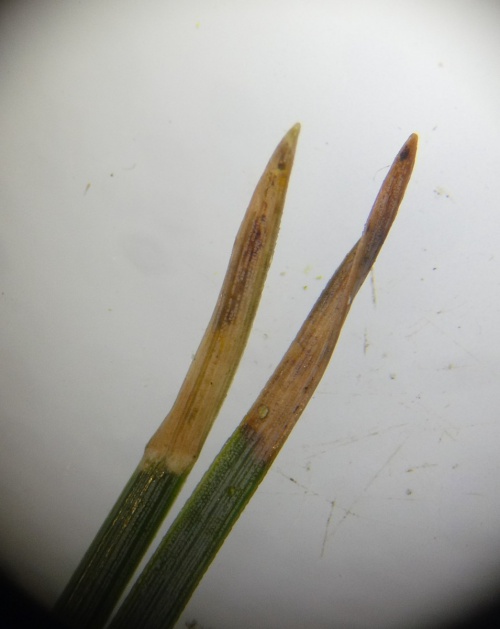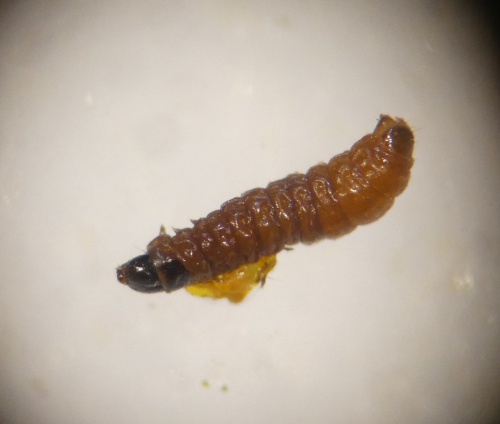Exoteleia dodecella
Pine Groundling
Wingspan 12 to 15 mm. The larva mines pine needles, entering from a small hole below the leaf tip, which is then sealed with silk. It feeds towards the needle tip, eventally causing a large mine in leaf-tip. The larva is brown with a dark head.
seveal other moth species mine pine needles
Photograph mine in pine needle, including the mine openings; photograph larva. Note host species
Occurs in conifer plantations.
The flight period is from June to July, and the moth can be attracted to light, but can also be disturbed from the foodplant by beating.
The larvae feed initially internally on the needles of pine (Pinus), and subsequently externally on the shoots, spinning the needles together.
Widely distributed throughout much of the British Isles but rather local. In the Butterfly Conservation's Microlepidoptera Report 2011 this species was classified as local.
It appears to be uncommon in Leicestershire and Rutland, where there are few records. L&R Moth Group status = D (rare or rarely recorded).
Leicestershire & Rutland Map
Enter a town or village to see local records
MAP KEY:
Yellow squares = NBN records (all known data)
Coloured circles = NatureSpot records: 2025+ | 2020-2024 | pre-2020
UK Map
Species profile
- Common names
- Pine Groundling
- Species group:
- Moths
- Kingdom:
- Animalia
- Order:
- Lepidoptera
- Family:
- Gelechiidae
- Records on NatureSpot:
- 5
- First record:
- 02/07/2018 (Jones, Dick)
- Last record:
- 19/07/2024 (Poole, Adam)
Total records by month
% of records within its species group
10km squares with records
The latest images and records displayed below include those awaiting verification checks so we cannot guarantee that every identification is correct. Once accepted, the record displays a green tick.
In the Latest Records section, click on the header to sort A-Z, and again to sort Z-A. Use the header boxes to filter the list.


